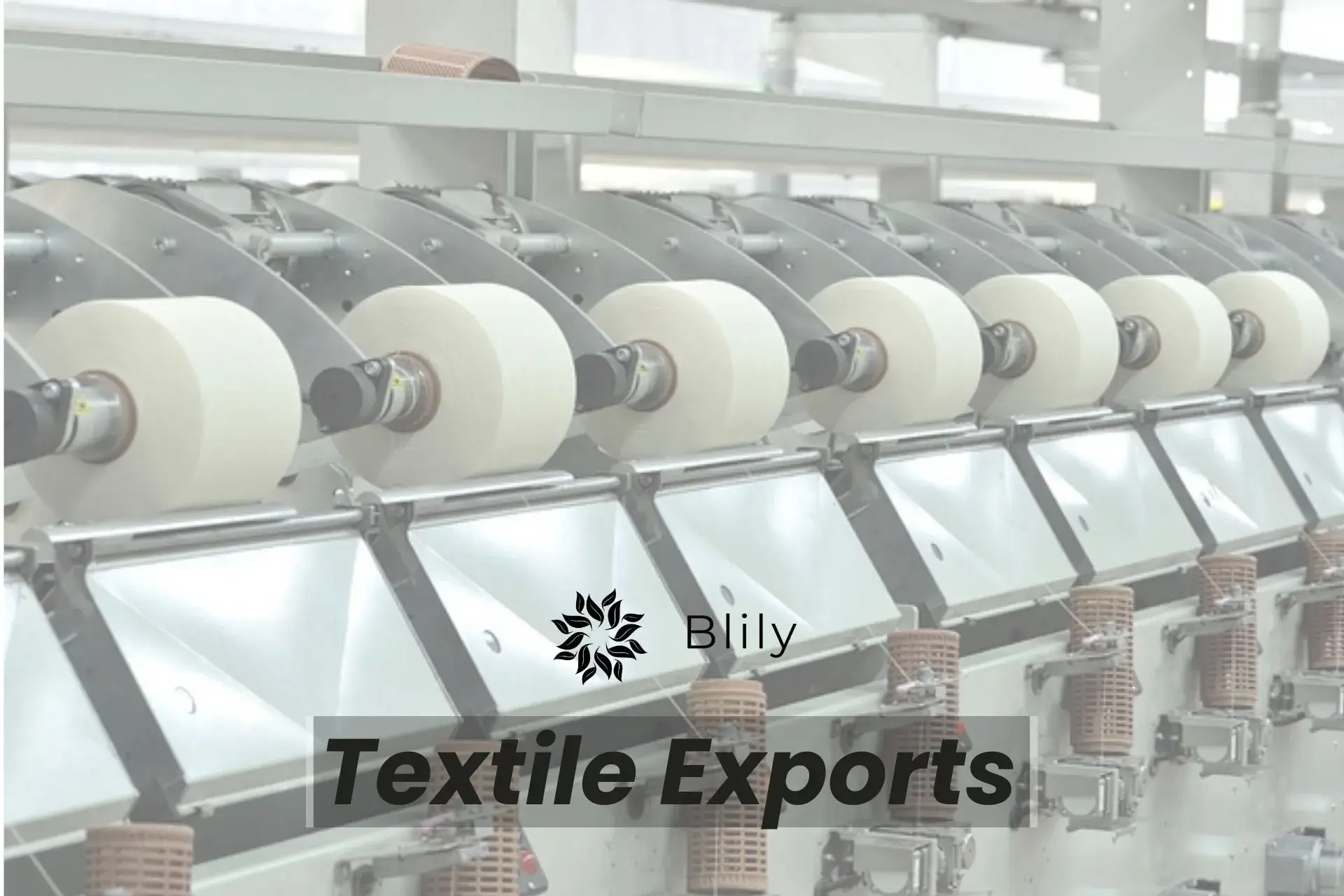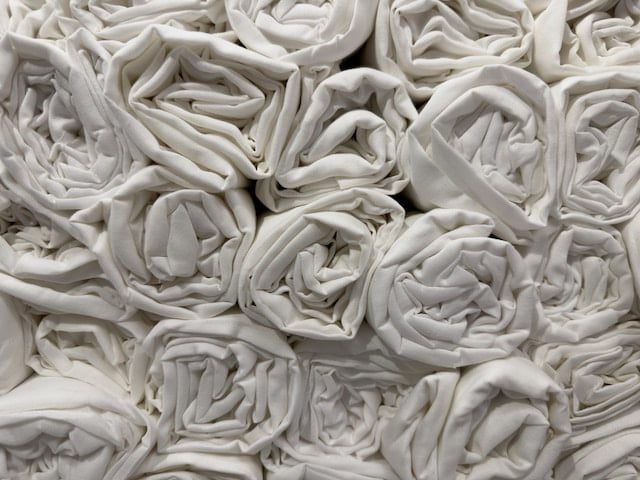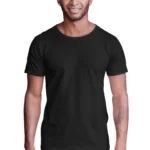Tanace Organics Pvt. Ltd

The Impactful Reach of Textile Exports: A Comprehensive Analysis of the Global Industry
Textile exports play a pivotal role in the global economy, shaping fashion trends, driving economic growth, and impacting the environment. In this comprehensive exploration of the textile export industry, we will delve into various aspects, from its global influence to its role in boosting economies, innovations driving the industry, evaluating its environmental foot print, and the profound connection between fashion trends and textile exports. So, let’s embark on this journey through the colorful world of textile exports.
The textile export industry is a global powerhouse, spanning continents and cultures. It touches nearly every corner of the world, connecting producers, manufacturers, and consumers alike. To understand the significance of textile exports, we need to take a closer look at its global influence.
Table of Contents
Textile Exports: A Driving Force in the Global Trade & Economy
Textile exports are a cornerstone of many nations’ economies. Countries like China, India, and Bangladesh have established themselves as Fabric export giants, providing a substantial share of the world’s clothing and textile products. These exports create employment opportunities for millions, particularly in developing countries, and contribute significantly to their GDP.
The interconnected nature of the textile industry means that it fosters international trade relations. Textile exports involve the sourcing of raw materials from one country, manufacturing in another, and eventually selling in various global markets. This process fuels economic growth, as it not only stimulates domestic production but also facilitates international cooperation.
The Role of Textile Exports in Boosting Economies
Now, let’s delve deeper into how textile exports become an economic catalyst for nations around the world.
Job Creation and Income Generation
Textile exports create jobs at multiple levels of production. Farmers, spinners, weavers, dyers, and garment manufacturers all play a part in the supply chain. In countries where textile exports thrive, these industries provide employment opportunities to a diverse workforce, from rural farmers to skilled laborers in urban centers.
The income generated through these jobs contributes to improved living standards and reduced poverty levels. In many cases, it empowers women in societies where they have historically faced limited economic opportunities.
Foreign Exchange Earnings
Textile exports are often a significant source of foreign exchange earnings for countries. The revenue generated from exporting textiles can be used to import essential goods, technology, and infrastructure, helping nations bridge the trade deficit and stabilize their economies.
Infrastructure Development
The growth of the textile export industry necessitates infrastructure development. Modern transportation networks, efficient ports, and reliable power sources become essential to facilitate the movement of raw materials and finished products. These investments, in turn, benefit other industries and enhance overall economic development.

Innovations in Textile Exports: Advancing the Industry
Innovation is the lifeblood of any industry, and textile exports are no exception. From cutting-edge production methods to sustainable materials, let’s explore the innovations that are driving this dynamic industry forward.
Sustainable Fabrics and Practices
In recent years, there has been a growing emphasis on sustainability in the textile industry. Innovations in sustainable fabrics, such as organic cotton, bamboo, and recycled materials, have gained traction. These materials not only reduce the environmental impact but also cater to the increasing demand for eco-friendly fashion.
Textile exporters are also adopting sustainable practices throughout the production process. This includes reducing water usage, minimizing waste, and implementing ethical labor practices. These initiatives are not only responsible but also appeal to conscientious consumers.
Digital Transformation
The digital age has revolutionized the textile export industry in terms of design, production, and marketing. Computer-aided design (CAD) and digital printing have streamlined the design process, allowing for greater creativity and efficiency.
E-commerce platforms have provided exporters with a global marketplace, reaching customers worldwide. Online retailing and marketing have made it easier for smaller textile exporters to gain recognition and compete with established brands.
Smart Textiles and Wearable Technology
Innovations in smart textiles have opened up new possibilities. Fabrics embedded with sensors can monitor vital signs, making them invaluable in the healthcare sector. Wearable technology, like fitness trackers and smart clothing, has also seen a surge in demand, creating new export opportunities.
Evaluating the Environmental Footprint of Textile Exports
While the textile export industry brings immense economic benefits, it also raises environmental concerns. It’s crucial to assess the environmental foot print of textile exports to understand the industry’s impact on the planet.
Water Usage and Pollution
One of the most significant environmental challenges in textile production is water usage. The dyeing and finishing processes are notorious for their high water consumption and the release of harmful chemicals into water bodies. To mitigate this, many textile exporters are adopting water-saving technologies and exploring eco-friendly dyes.
Waste Generation
Textile production generates a substantial amount of waste, from off-cuts and scraps to unsold garments. The disposal of textile waste can strain landfills and contribute to environmental degradation. Innovations in recycling and upcycling are emerging as solutions to reduce waste and extend the lifecycle of textiles.
Fast Fashion and Overconsumption
The rise of fast fashion has led to an increase in textile waste. The rapid turnover of clothing items encourages consumers to discard garments after only a few wears. Addressing this issue involves promoting sustainable fashion practices and encouraging consumers to choose quality over quantity.
The Influence of Fashion Trends on Textile Exports
Fashion trends are a driving force behind textile exports. The ever-evolving world of fashion shapes consumer preferences, demand for certain textiles, and even production methods. Let’s explore the intricate relationship between fashion trends and Fabric exports.

Fast Fashion vs. Sustainable Fashion
Fast fashion, characterized by quickly changing trends and low-cost production, has dominated the Fabric export landscape for years. However, growing awareness of its environmental and ethical implications has led to a shift towards sustainable fashion.
Sustainable fashion trends prioritize eco-friendly materials, ethical manufacturing, and longevity. Textile exporters must adapt to these changing consumer demands, emphasizing quality over quantity and sustainable practices.
Cultural Influences
Fashion trends are often influenced by cultural factors, including traditions, art, music, and even global events. As cultures evolve and blend, textiles reflecting these influences become highly sought after in the export market. Exporters who stay attuned to these shifts can capitalize on emerging trends.
Celebrity Endorsement
Celebrities have a significant impact on fashion trends. When a well-known personality dons a particular style or fabric, it can lead to a surge in demand for similar products. Textile exporters often collaborate with designers and celebrities to leverage this influence.
Seasonal Variations
Fashion is cyclical, with seasonal trends dictating consumer preferences. Textile exporters must anticipate and adapt to these variations in demand. For example, lightweight fabrics may be in high demand during summer, while heavy woolens are sought after in winter.
Collaboration for a Sustainable Future
To mitigate the environmental foot print of textile exports, collaboration among all stakeholders is paramount. Governments can play a significant role by implementing regulations and incentives that encourage sustainable practices. This may include offering tax breaks for eco-friendly production methods or setting limits on water usage and pollution.
Manufacturers can adopt sustainable technologies, such as water recycling systems and eco-friendly dyeing processes, to reduce their environmental impact. Investing in research and development for sustainable materials can also drive positive change in the industry.
Consumers, too, hold significant power. By making conscious choices and supporting brands that prioritize sustainability, consumers can influence the market. Choosing high-quality, timeless garments over disposable fashion and participating in clothing recycling programs are steps individuals can take to reduce their own impact.
Education and Awareness
Education is a powerful tool for change. Raising awareness about the environmental and social implications of textile exports can prompt consumers to make more informed choices. Educational initiatives can also inform manufacturers about best practices in sustainability.
Fashion brands can lead by example, using their platforms to educate customers about the importance of sustainable fashion choices. They can transparently communicate their efforts to reduce their environmental foot print and promote ethical production practices.
Investing in Circular Economy
The textile industry is gradually shifting towards a circular economy model. In this model, textiles are designed to be recycled, upcycled, or repurposed, reducing the need for new raw materials and minimizing waste.
Clothing brands are experimenting with take-back programs, where customers can return old garments for recycling or receive incentives for future purchases. Innovations in textile recycling technology are making it possible to turn old clothing into new fabric, closing the loop on textile waste.
Ethical and Fair Labor Practices
In addition to environmental concerns, the textile export industry has faced scrutiny for labor practices in some regions. Sweatshops, child labor, and unsafe working conditions have garnered international attention. Brands and manufacturers are increasingly held accountable for the ethical treatment of their workers.

Promoting fair wages, safe workplaces, and workers’ rights should be a priority for all stakeholders in the textile export industry. Certifications like Fair Trade and initiatives to improve labor conditions can help build trust and ensure the well-being of workers.
Conclusion: Balancing Growth and Responsibility
The global influence of textile exports is undeniable, but it comes with responsibilities. As the industry continues to grow and evolve, it must find ways to minimize its environmental foot print, promote ethical practices, and adapt to changing fashion trends that prioritize sustainability.
Innovations in sustainable materials and production methods offer hope for a brighter future. Collaboration among governments, manufacturers, and consumers is essential to drive meaningful change. By balancing economic growth with environmental and social responsibility, the textile export industry can continue to thrive and shape the way we dress while respecting the planet and its people.
As consumers, we too have a role to play. Our choices, from the clothing we buy to the brands we support, can drive the industry towards a more sustainable and ethical future. By making informed decisions, we become a part of the global effort to transform the textile export industry into a force for positive change, benefitting economies and the environment alike.
The Future of Textile Exports: Embracing Sustainability and Innovation
Looking ahead, the textile export industry is at a crossroads, where sustainability and innovation will shape its future. Let’s delve deeper into what the future holds for this dynamic industry.
Technological Advancements
Innovations in technology are poised to revolutionize the textile export industry further. From 3D printing of textiles to automated production lines, technology offers the potential for greater efficiency and reduced environmental impact.
Artificial intelligence (AI) and machine learning are being used to optimize supply chains, predict consumer trends, and even design clothing. These advancements can lead to a more streamlined and responsive industry.
Circular Fashion
Circular fashion, often referred to as “closing the loop,” is a concept gaining traction in the textile export industry. It involves designing products with longevity in mind, using materials that can be easily recycled or repurposed. This shift towards circularity not only reduces waste but also offers new business models, such as clothing rental and resale platforms.
Transparency and Ethical Practices
Consumers are increasingly demanding transparency from fashion brands. They want to know where their clothing comes from, how it’s made, and whether ethical and sustainable practices are followed. As a result, brands are being held accountable for their supply chains.
Blockchain technology is emerging as a tool to provide transparency. By recording every step of a product’s journey on a blockchain, consumers can trace the origin of their clothing, ensuring it was produced ethically and sustainably.
Localized Production
The pandemic exposed vulnerabilities in global supply chains. As a response, some textile exporters are exploring localized production. This approach reduces transportation emissions, shortens lead times, and allows for more agile responses to consumer demands.
Consumer Activism
Consumers are increasingly aware of the social and environmental impacts of their choices. They are using their purchasing power to support brands that align with their values. This consumer activism is driving the industry towards greater sustainability and responsibility.
Education and Collaboration
Education and collaboration will continue to play crucial roles in the future of textile exports. Industry-wide initiatives, partnerships between governments and manufacturers, and consumer education campaigns can accelerate progress towards sustainability and ethical practices.
Conclusion: A Bright and Responsible Future
The textile export industry is a dynamic and influential force in the global economy. It has the power to drive economic growth, shape fashion trends, and lead in sustainability and ethical practices. As we move forward, it’s imperative that all stakeholders—governments, manufacturers, consumers, and fashion brands—work together to ensure a responsible and sustainable future for textile exports.
Innovations in materials, technology, and production methods offer immense potential for reducing the industry’s environmental impact. Circular fashion and transparent supply chains can build trust with consumers who are increasingly concerned about the origins of their clothing.
Ultimately, the future of textile exports is one where economic prosperity goes hand in hand with environmental responsibility and ethical labor practices. By embracing sustainability, innovation, and collaboration, the industry can continue to thrive while leaving a positive legacy for generations to come.
As consumers, we have the power to drive this change by making conscious choices, supporting brands that prioritize sustainability, and holding the industry accountable for its practices. Together, we can ensure that the global influence of textile exports remains a force for good in our interconnected world.







